- Many workers, including all of Insider Inc., are being told to work from home as the coronavirus pandemic sweeps the globe.
- Working remotely is an adjustment. One of our editors says it can take 3-6 months to get the hang of it.
- But there are a few universal truths about how to do it productively and stay sane. Six of our top editorial leaders who have worked remotely for years reveal their best tips on how to crush your job while out of the office.
- Their advice: Set yourself up for success by using the right tools and creating the right work environment. Get dressed, over-communicate with your colleagues, prioritize your tasks, take some breaks, and produce results.
- Visit Business Insider’s homepage for more stories.
Employees around the world are being told to work remotely in the wake of coronavirus. But going from a buzzing office to quiet solitude is an adjustment.
“It won’t be easy, so don’t be too hard on yourself,” says Zach Tracer, Business Insider’s healthcare editor. Tracer has managed a team of five reporters remotely for over a year. “When I started working from home, people told me it can take three to six months to adjust. I think that’s pretty accurate.”
While many remote jobs are different, there are some universal ways to set yourself up for success.
Business Insider has a number of editorial leaders who have worked from home for years. They are some of our most productive employees, reaching more readers and subscribers with their stories and breaking more news than many of their media rivals.
Six of them provided their best advice on how to get ahead without being in the same room as their colleagues:
- Julie Bort, Chief Tech Correspondent (Based in Boulder, CO. Has been working remote for over a decade)
- Hayley Peterson, Chief Retail Correspondent (Based in Richmond, VA, has been working remote for a few years)
- Zach Tracer, Healthcare Editor (has been working remotely from Philadelphia, PA for over a year)
- Cork Gaines, Sports Editor (based in Texas, has been managing a team of reporters for 8 years)
- Dave Smith, Front Page Editor (based in Toronto since 2017)
- Debbie Strong, Sr. Contributors and Freelance Editor (oversees a team where 60% of the full-time employees are remote, in addition to all the remote freelancers and contributors)
I circulated their advice to our newsroom earlier. I've adapted and shared it below.
Wishing you all a healthy, safe and productive remote working experience.
1. Set yourself up for success with the right tech and work environment.
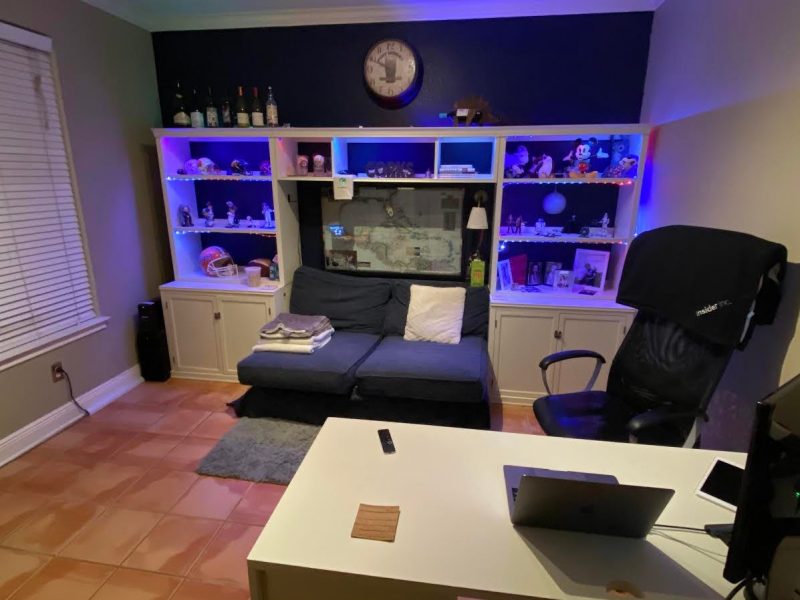
What makes a productive home or remote office?
Have a place in your house where you work, and another where you relax.
Hayley Peterson recommends not working on a couch, where you might feel sleepy. Everyone recommended working at a desk or a table.
Work from a place that boosts your mood and has great natural light.
Everyone spoke about sitting some place with lots of natural light. Debbie Strong, our senior contributors and freelance editor, gets flowers every week for her table to make her environment feel fresh. Buy or make some great coffee. If you're not in a self-quarantine situation or an area that needs to prevent the spread of coronavirus, work remotely from a coffee shop once per week in fact, to change your scenery and feel connected to the outside world.
Figure out the tech and tools you need.
As a newsroom, Business Insider uses a few productivity tools to stay in touch while remote:
- Slack, for instant communications
- Gmail and Google Calendar, for the obvious.
- Google Hangouts for video conferencing with our teams around the world.
Dave Smith uses his TV as a second monitor via Apple TV + AirPlay.
Cork Gaines has the home office of your dreams, complete with bottles of whiskey and sports memorabilia. It includes:
- A MacBook with an external widescreen monitor.
- An external microphone that helps with meetings.
- Cork *built* a second computer, a PC, which does most of his video recording.
- He has Philips Hue lightbulbs to control the lighting, which helps with meeting atmosphere.
- He uses an iPad during video meetings, in addition to his laptop where the actual conference is pulled up, so he can take notes without switching screens.
- When he's feeling restless, he has a standing table with an exercise bike that fits under it to turn it into an exercise desk.
2. Get dressed
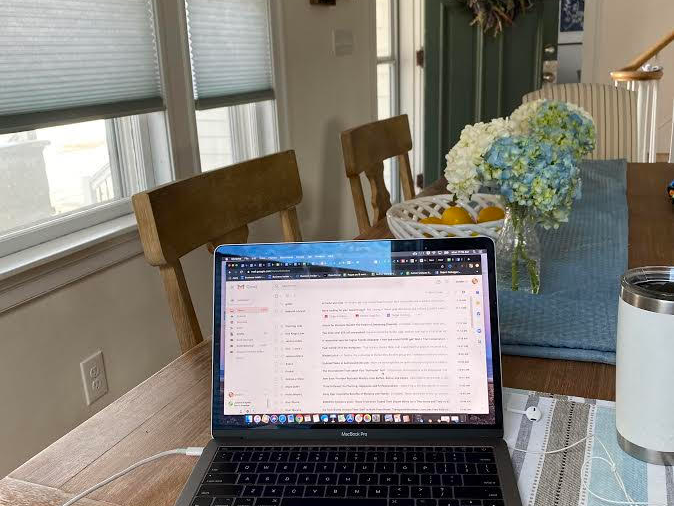
You think working from home means pjs, sweats, and not leaving bed? Wrong!
Tracer, our healthcare editor, wakes up at 6:30, showers, and puts on "real" clothes.
Strong, a mother to three boys, wakes up at 5:45 to feed her baby then gets caught up on news for the day and also gets dressed. "No sweats or PJs here!" she says.
Gaines wakes up at 5:30 to meditate, does some journaling, and then gets dressed.
When you work from home, you still have a job. So act like it, down to having a morning routine and looking/smelling human.
2. Make a to-do list – even a few errands.
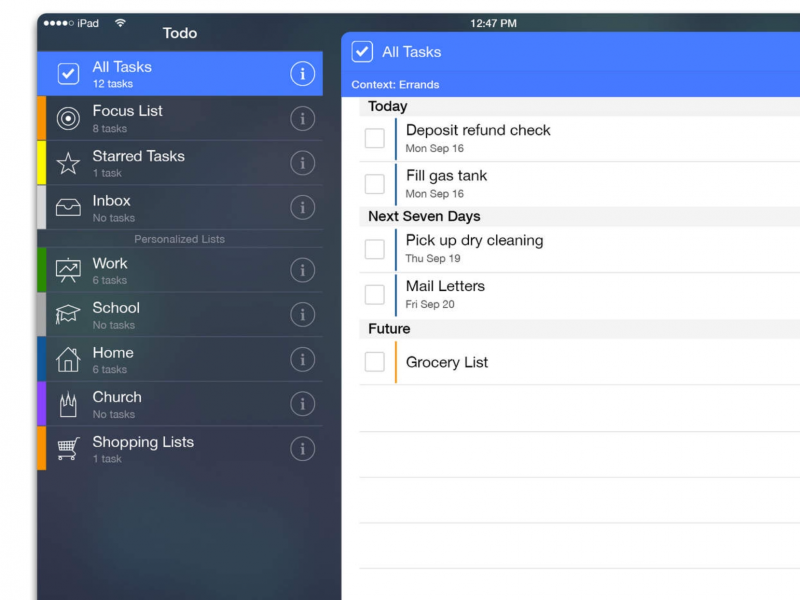
Strong sends a to-do list to herself over Slack every evening for the following morning.
Tracer uses a paper checklist as well as Google Calendar to stay on track.
Dave Smith, our front page editor, outlines a plan for the day, including errands, to make sure he stays on schedule.
3. Over communicate

Be very present over slack, calls, and text - whatever your company uses to communicate. Respond to questions quickly. Schedule meetings with teammates just like you would in the office, ideally over video conference, such as Zoom or a Google hangout.
Over communicate what you're doing and if you're a manager, what you expect from your team.
"I have check-ins with each member of my team at least weekly by video chat (Google Hangout), and we also do our team meeting in a Google Hangout," Tracer says. "Everyone on my team has my cell, and I have theirs, in case we need to get in touch quickly. They all know they can call me at any time and shouldn't hesitate to slack or call if the want to chat something through."
Julie Bort, our chief correspondent, will send a message to her editors every morning with her game plan for the day. If she is spending the day reaching out to sources, for example, she lets them know that so they don't wonder why she hasn't filed a story.
It's the same thing you'd do if you had a doctor's appointment scheduled: give your boss a heads up rather than just not show up for work.
Constant communication builds trust between managers and their reports, which is critical for successful remote working.
4. Don't go dark and try to sneak off, even if you're going to the gym (which your boss might even encourage). Trust is important.
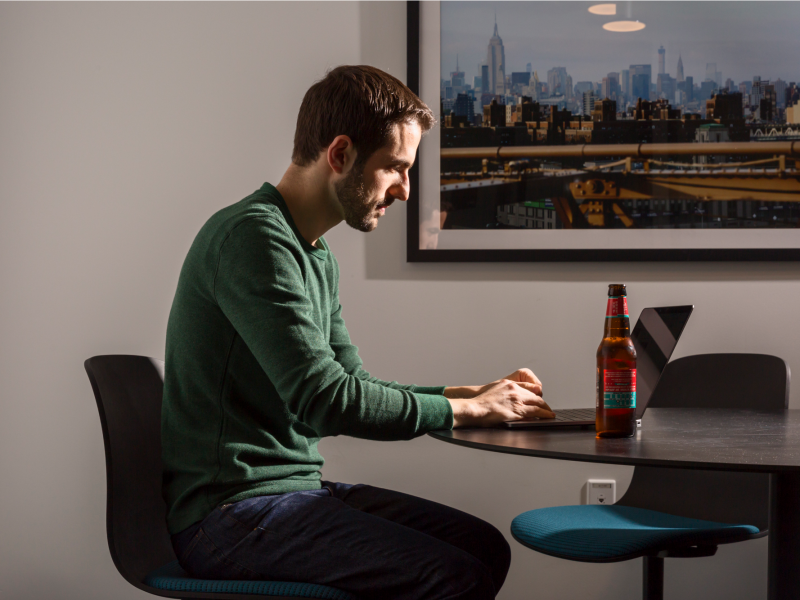
Tracer says it well:
"I trust my team to get work done, and this isn't about monitoring where they are all the time. If someone wants to go to a yoga class (or grab a coffee with a friend midday), that's fine, as long as 1) they get their work done and 2) I know where people are, and what resources we have available in case news breaks."
5. Use the solitude to help you focus. But don't forget to get up and take breaks.

Working remotely can help you focus. There are no chatty coworkers, alluring kitchens, or big meetings to distract you.
You can also make tons of phone calls without needing to book a conference room or worrying you'll bother colleagues.
"I think I can get a lot more done from home," says Tracer. "There are fewer distractions."
In fact, you may find you're so productive that it becomes problematic.
Hayley Peterson, our chief retail correspondent, sets timers to remind herself to stretch her legs .
"One of the hardest things about working from home for me is that it's easy to fall into a routine where I don't take breaks because there are so few distractions, compared to an office full of coworkers," she says.
"In an office, I don't have to think about this as consciously because a quick conversation with a coworker on the way to the kitchen can suffice as a mental refresher. It is really hard to force myself to step away when work is crazy. Even just a 5-minute break goes a long way in preventing burnout."
Combat loneliness with background noise — or even a pet, like a dog.
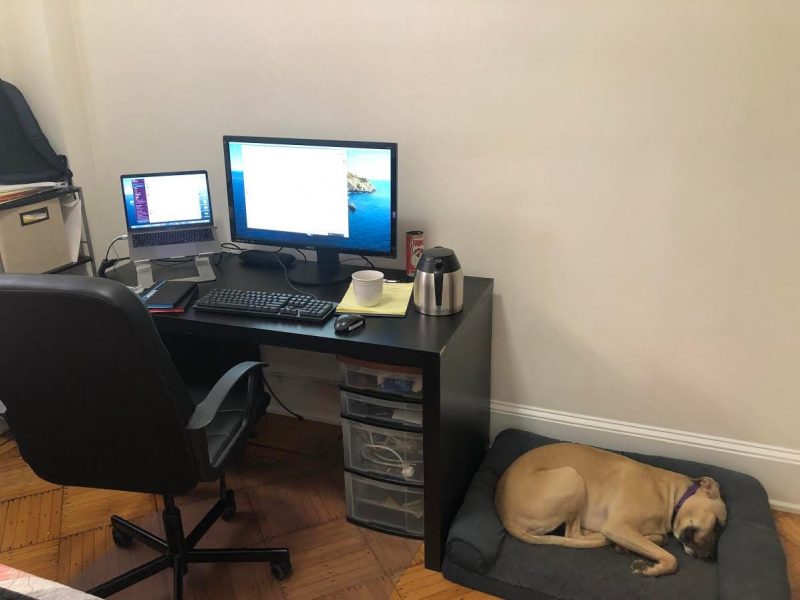
Each remote worker brought up loneliness as an issue.
Solutions ranged from creating background noise that requires little to no attention - such as a news channel on at low volume, a Spotify playlist, or even a Twitch stream, used by our tech-enthusiast editor Dave Smith.
If you'll be remote for a long time, you might want to consider a pet if you have the time and resources for one. Tracer swears by having his dog as a companion and a perpetual walking-break reminder.
8. The best way to prove you're working hard from home: produce results.

"There's this weird misconception that working from home is the same as not working," Julie Bort says. "But not working means you wouldn't have a job for long."
She's right! You need to be productive no matter where you work, and get results.
Dave Smith agrees. "My work speaks for itself," he says. "Producing tangible results is the best way to let people know you're actually working while remote."











